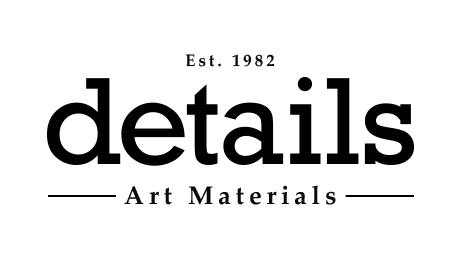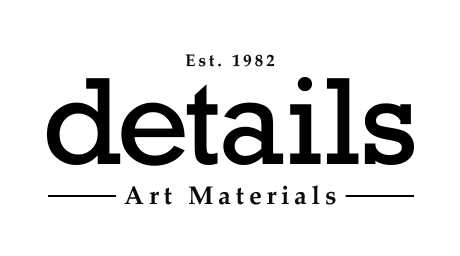Starting Watercolours: A Beginners Guide to Paints, Papers and Brushes

Setting sail into the world of watercolours is an exciting journey that opens up a world of creativity and expression. As a beginner, understanding the fundamentals and mastering the techniques will help make sure you have a rewarding artistic experience. This guide provides an overview of the materials and equipment you'll need to get started, make good progress and most importantly, have fun!
Watercolour Paints:
Student-grade paints are a fantastic choice for your first set of watercolours, offering a good range of fundamental colours at an affordable price. Student-grade brands include the Cotman range by Winsor & Newton; Van Gogh and Talens Art Creations.
If you want to make more of an investment, artist-grade watercolour paints offer a broader spectrum of colours, stronger pigmentation and improved light-fastness. Artist-grade brands include Winsor & Newton's Professional Water Colour, Rembrandt and Rosa Gallery.
Whichever you choose, you'll also have to decide between tubes, which offer more vibrant pigments, and pans (whole-pans or half-pans) which are dried cakes of paint, activated by adding water and perfect if you want portability and convenience. There is no right choice here, so don't worry - it's purely down to your personal preference.
Watercolour Paper:
Available in three textures - Hot Pressed which is smooth, Cold Pressed (sometimes called 'Not') which has a slight texture, and Rough which is the most heavily textured.
We recommend you choose acid-free, heavyweight paper around 300gsm to get started, although lighter and heavier papers are available. Lighter papers may buckle if they're painted on without being properly 'stretched' first (a process where you soak the paper before securely taping it to a board and allowing it to dry and become taut before use). To keep it simple as a beginner, 300gsm should be heavy enough to allow you to practice without needing to go through the stretching process.

Brushes:
Watercolour brushes come in a variety of shapes, sizes and bristle materials. Investing in a variety of brushes will give you greater versatility in the strokes, marks and techniques you can use in your artwork.
Although there are lots of more unusual, specialist brushes designed for specific techniques, the main brush shapes are:
-
Round - Perfect for details and precise work, these pointed brushes give you great control of exactly where your paint is going. Choose a range of sizes for the most versatility.
-
Flat - Suited to creating broad washes of colour and straight edges, having a couple of these broad, flat brushes in different sizes is a must for any beginner.
-
Filbert - Similar to a flat but with rounded corners, these brushes are particularly useful for painting curves and are often used to paint flowers and portraits due to the softer, more organic line they can create.
-
Rigger - A pointed, round, extremely long bristled brush, a rigger is often used for painting continuous, flowing lines like ships' rigging (hence the name). More commonly used nowadays to paint tree branches, animal whiskers and long blades of grass.
- Fan - A flat brush with broadly splayed bristles, these brushes are frequently used to paint foliage, add texture and to soften and blend harsh lines and colours.
In addition to choosing which shape brushes you want, you'll also have to decide on what kind of bristles you want your brushes to have. Traditionally, watercolour brushes were made from soft natural bristles like sable, squirrel, goat and pony hair. Sable was particularly sought after due to its softness and excellent paint-holding capacity, and although sable brushes are still the most highly regarded and desirable, their cost is often prohibitive. Nowadays there are many equally effective yet cheaper synthetic alternatives available, including nylon, prolon, imitation sable and various blends of fibres by different manufacturers.
As with the choice between tubes or pans or paint, there is no right answer here and which type of bristle you buy should come down to your personal preference and how much you want to invest. If looked after properly, good watercolour brushes can last for many years, so it's worth buying good quality brushes if you can.
Other things you may find useful:
In addition to the essential paints, brushes and paper, there are a few other things you may find make your life easier when painting.
-
Palette - A plastic or porcelain mixing palette with wells for color blending and a large flat surface for diluting paint. Plastic palettes are extremely affordable and durable, but will eventually become stained and discoloured from the paint. Porcelain palettes are a little more costly and can break if dropped, but can be thoroughly and reliably cleaned for decades if taken care of well.
-
Masking Fluid - This latex-based medium can be applied to areas of your paper you want to keep pristine, as watercolour paint will not adhere to it. Make sure it's dry before painting over it, and then simply use an eraser to rub it off after you're finished painting to reveal the untouched areas underneath. Make sure to never use your good painting brushes to apply it as it's extremely hard to remove from bristles.
-
Water Containers - You'll find it useful to have two containers – one solely for clean water to add to your paints, and one for rinsing brushes. If you use your rinsing water to dilute your paints, you'll likely find the colours become dull and muddy. You can use almost anything for your containers, including old mugs (don't drink from them again after they've had paint in them, some pigments are toxic), and well-cleaned jam jars or plastic food containers.
-
Masking Tape - Low-tack masking tape to is a great way to secure your paper to a board, to preventing it warping while painting.
-
Pencils and Erasers - An HB or 2H pencil is a great choice for sketching lightly onto your paper to establish your composition, and a normal polymer eraser is a handy way to make corrections.
- Paper Towels or Rags - Essential for controlling moisture on your brushes, dab excess water before painting or gently squeeze water out of your brushes before allowing them dry.
As you immerse yourself in the world of watercolors, remember it's like any other skill and that mastery comes with practice and exploration. There is never only one 'right' way of doing something and it's important to experiment and see what works for you. The main thing is to enjoy yourself and remember that in watercolour, the true magic happens when you let loose and embrace your unique artistic touch. So, pick up your brushes, experiment fearlessly, and enjoy the boundless possibilities of watercolor. Happy painting!


